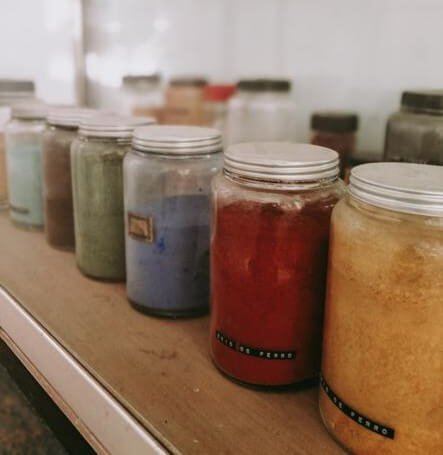
PLASTIC ADDITIVES
ALTERNATIVES FINDER
The Plastic Additives Alternatives Finder supports the rapid elimination of chemicals of concern and the optimization of plastic feedstocks with safer alternatives to accelerate circularity.
The free tool enables manufacturers to check the chemical hazard profile of over 1100 different additives used in plastics organized by function and material compatibility. It has been jointly developed by the Safe + Circular Materials Collaborative, a partnership between ChemFOWARD and the Sustainable Packaging Coalition and made possible with generous support from the Passport Foundation and Foundation Didier et Martine Primat.
Please note that this work is a starting point and does not cover all functional plastic additives, it is a subset of ChemFORWARD’s full chemical hazard database, and additions to the dataset are welcomed.

WHY
Plastic additive safety is critical to circularity
Last year a study suggested that nearly 2,500 chemical additives used in plastics were toxic or their toxicity was unknown. As companies work to transition to a more sustainable, circular plastic economy, these toxic additives are a barrier, as their presence in waste is not labeled creating risk if recycled into new products, where they could pose significant threats to human health and the environment.
Overcoming this challenge will be a critical part of achieving circularity in plastics, which is itself key to tackling multiple problems presented by plastic products and waste.
The driving force behind the ChemFORWARD–SPC partnership is to increase accessibility to trusted information.
Read more ❯❯
HOW
Supply Chain transformation
We are fundamentally changing the way that chemical hazard data is created, maintained, distributed, consumed and financed. This new model of data-sharing and benefit-sharing is cost-effective for individual users while advancing collective impact. With a rapidly growing repository of chemical hazard data and safer alternatives, users benefit from the contribution of others while utilizing the best available science to advance their work.
With a definitive hazard profile per CAS#, we eliminate duplicative effort, improve consistency, and lower costs for users. Everyone in the supply chain benefits:
Brands and retailers accelerate their circularity goals by asking for safer additives and filling high priority data gaps;
Manufacturers easily access high-quality information on hazards and safer alternatives enabling better decisions and better products;
Additive suppliers have a global platform to amplify their verified safer additives via the SAFER program.
Together, we are ending toxic chemical exposure, advancing human and environmental equity, and realizing a circular economy.
ChemFORWARD Program Description ❯❯

WHAT
trusted, accessible chemical hazard information
The Plastic Additive Optimization Tool is a free searchable dataset of plastic additives organized by chemical name, CAS#, function and material compatibility. It is a subset of ChemFORWARD’s full dataset.
The tool uses recognized assessment methods including the UN Globally Harmonized System (GHS) of classification and labeling of chemicals and the Cradle to Cradle Material Health Methodology to assign hazard ratings, as well as publicly-available Greenscreens and the US EPA Safer Chemicals Ingredients List (SCIL). The free Plastic Additive Optimization Platform provides hazard band ratings for each chemical additive - ranging from:
A ,B, and C which are considered safer alternatives;
Through to F, which is considered unsafe; and
A question mark (?) is used to indicate where hazard data is lacking and a chemical hazard assessment is recommended before use.
The tool suggests safer alternatives relevant to the function of the additive selected ordered with best hazard ratings at the top. Filters by material compatibility can be used to narrow results. Relevant regulatory and non-regulatory lists are also displayed.
If data is needed beyond the hazard band rating, subscribers can pay per chemical to receive access to full hazard tables and endpoint rationales. New chemical hazard assessments can be procured to fill high priority data gaps.
Constructing The Dataset ❯❯




